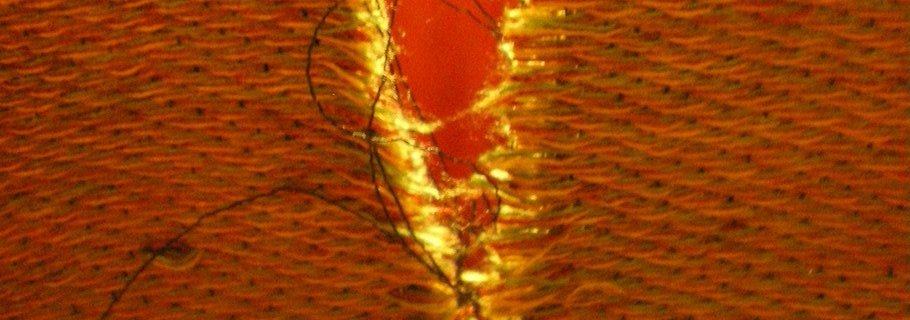If you have been a Christian any length of time, you are familiar with that miraculous moment when the great curtain of the temple was torn in two. At the death of Jesus, at the very moment he drew his last breath, that curtain was ripped apart stitch-by-stitch. And not only was it ripped apart, but it was ripped from top to bottom by the hand of God rather than bottom to top by the hand of man. There is tremendous significance in this act. But there is even greater significance if we pause for just a moment to consider one often-overlooked detail about that curtain.
Let’s start back in the Garden of Eden. Man committed sin against God and God determined that man must be barred from Eden, this place where God dwells and this place where God had planted the Tree of Life, that source of life that will never end. “He drove out the man, and at the east of the garden of Eden he placed the cherubim and a flaming sword that turned every way to guard the way to the tree of life” (Genesis 3:24 ESV). These cherubim, fierce angelic warriors and their ferocious swords, now stood between God and man to serve as a warning and an object lesson: The way is shut. Man can no longer be where God is, he can no longer walk and talk with God, he can no longer be near that source of life. Instead, he must live out his days alone, die, and return to the dust he was taken from.
When we advance in time to the tabernacle and the temple we see those same cherubim still guarding the way to God. This tabernacle and this temple are the place where God has chosen to be specially present, to dwell among his people. In both buildings the Holy Place is divided from the Most Holy Place by a curtain, a blood-covered veil. And stitched onto that curtain is the image of the cherubim. This curtain bars everyone from entering the Most Holy Place. Only the High Priest is allowed to go through the curtain and even then only once per year and even then only to bring an atoning sacrifice of blood before God. All through the year and all through the decades that curtain faces outward to remind the people that the way to God’s presence is closed by a barrier and guarded by cherubim. There is no doubt in their minds: We have been closed off from the presence of God. God will strike us down if we dare approach him. But there must also be a question in their hearts: Will the way to God ever be opened again?
For all of those thousands of years between Eden and the cross, the cherubim carried out this mission from God. For all those years they served as a reminder of the state of warfare between God and man. For all those years they stood between creature and Creator, guarding God’s holiness from man’s impurity.
But then, at last, Jesus was taken to a cross not too far from the temple. Jesus was nailed to the cross, he faced the wrath of God against the sin of humanity, and he died. And in that very moment, in the moment his heart beat for the last time, that curtain, that blood-colored veil, was ripped in two. It was torn apart stitch-by-stitch. But, of course, it was not only the curtain that was being torn apart. It was also the cherubim. For the first time since Eden the cherubim were relieved of their duty. They, too, were torn to pieces, demonstrating that it was no longer necessary to guard the way to God. The way was now open! And in that moment I wonder if it was the cherubim who cheered the loudest.
But if you pause and look closely you will see that there is still something, there is still someone, between God and man. It is no longer a cherubim but a human being. He is no longer threatening you with a sword and warning you away but he is inviting you to come. It is Jesus Christ, the God-man, calling out, “Come to me, all who labor and are heavy laden, and I will give you rest. Take my yoke upon you, and learn from me, for I am gentle and lowly in heart, and you will find rest for your souls. For my yoke is easy, and my burden is light” (Matthew 11:28-30). The way is forever open, open to all who will come.









